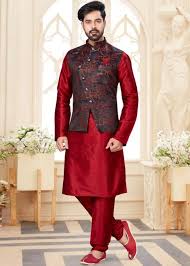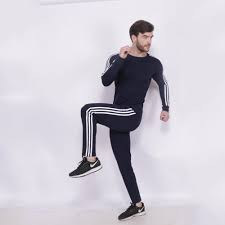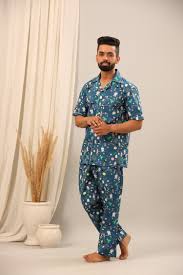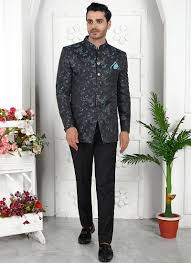Definition of Clothes
Clothes (or clothing) are materials worn on the body to cover, protect, or decorate it. They are typically made from fabric or textiles, but they can also include materials like leather or synthetic fibers.
👕 Types of Clothes
Clothes can be categorized in various ways. Here are some main types:
1. Casual Wear
Casual Wear
-
Everyday, comfortable clothing.
-

Examples: T-shirts, jeans, sweatshirts.
Jeans are a type of trousers made from denim or dungaree fabric. Originally designed for workers due to their durability, jeans are now a popular casual and fashion wear for people of all ages around the world.
🧵 Types of Jeans:
Type |
Description |
|---|---|
| Straight-Leg Jeans | Classic fit with a straight cut from hip to ankle. |
| Skinny Jeans | Tight-fitting from waist to ankle, stretchy material. |
| Bootcut Jeans | Slightly flared from the knee to the ankle, fits over boots. |
| Flared Jeans | Wide flare from the knee down, popular in the 70s. |
| Boyfriend Jeans | Loose, relaxed fit; gives a casual and comfy look. |
| Mom Jeans | High-waisted with a loose fit, often vintage style. |
| Wide-Leg Jeans | Loose throughout, from thigh to ankle. |
| Ripped/Distressed Jeans | Designed with intentional rips or worn patches for a trendy look. |
| High-Waisted Jeans | Waistline sits above the natural waist, giving a flattering shape. |
✅ Advantages of Jeans:
| Advantage | Explanation |
|---|---|
| 1. Durability | Denim is a strong, long-lasting fabric suitable for everyday wear. |
| 2. Versatility | Can be worn with many outfits — casual or semi-formal. |
| 3. Comfort | With stretchable fabrics, jeans can be very comfortable. |
| 4. Style | Always in fashion; come in many styles, colors, and fits. |
| 5. Easy Maintenance | Can be worn multiple times before washing, easy to clean. |
| 6. Gender-Neutral | Worn by men, women, and kids alike. |
2. Formal Wear
Formal Wear
-
Clothing worn for official or special occasions.

-
Examples: Suits, dresses,
-
Formal wear refers to clothing that is worn for formal occasions such as business meetings, weddings, ceremonies, and official events. It usually looks neat, polished, and follows a dress code that shows respect and professionalism.
👗 Types of Formal Wear
🔹 For Men:
Type Description Suit Matching coat and trousers, often worn with a dress shirt and tie. Tuxedo Very formal evening suit, often worn with a bow tie. Blazer & Dress Pants Semi-formal alternative to a full suit. Dress Shirt & Tie Button-down shirt with a necktie. Formal Shoes Leather shoes like Oxford & loafer
3. Traditional/Ethnic Wear
Traditional/Ethnic Wear
-
 Clothing specific to a culture or region.
Clothing specific to a culture or region. -
Examples: kurta pajama (India)
-
Traditional wear for men refers to cultural or ethnic clothing that represents the customs, heritage, and identity of a specific country or community. These clothes are typically worn during festivals, weddings, religious ceremonies, and other special occasions.
🌍 Types of Traditional Wear for Men ()
Country/Region Traditional Clothing Description India Kurta Pajama / Sherwani / Dhoti Long tunic with trousers; sherwani is a formal coat; dhoti is a wrapped lower garment.
4. Sportswear / Activewear
Sportswear
-
Designed for physical activity or exercise.
-
Examples: Track pants, gym tops, running shoes.
-
Sportswear (also called activewear) refers to clothing designed specifically for sports, exercise, or physical activities. It is made from materials that are comfortable, stretchable, breathable, and often sweat-resistant to help athletes or active people perform better.
🧢 Types of Sportswear
Type Description T-shirts / Tank Tops Made of breathable fabric to keep the body cool during workouts. Track Pants / Joggers Lightweight pants designed for running or gym workouts. Shorts Worn in hot weather or indoor activities for better movement. Sports Bras Supportive innerwear for women during physical activities. 
6. Seasonal Wear
-
Designed for particular weather conditions:
-
Winter Wear: Jackets, sweaters, scarves.
-
Summer Wear: Shorts, tank tops, cotton shirts.
-
Rainwear: Raincoats, waterproof jackets.
-
7. Sleepwear / Nightwear
Sleepwear
-
Comfortable clothing worn while sleeping.

-
Examples: Pajamas, nightgowns.
-
Nightwear (also called sleepwear or nightclothes) refers to clothing that is specially designed to be worn while sleeping. It is made to be soft, loose, and comfortable to help the body relax and get good sleep.
🛏️ Types of Nightwear
🔹 For Men and Women:
Type Description Pajamas A two-piece set with a shirt and pants, made from soft fabrics like cotton or flannel. Nightgown A long, loose dress worn by women while sleeping. Nightshirt A long shirt, worn by both men and women, similar to a short gown. Shorts Set A short-sleeved top and shorts for warm weather.
8. Party Wear / Fashion Wear
Party Wear
Stylish or decorative clothing for events and outings.
-
Examples: Designer dresses, fashionable tops
-
Party wear for men refers to stylish and well-dressed outfits that are worn to parties, celebrations, weddings, or special occasions. These clothes are designed to look fashionable, elegant, or festive depending on the type of event.
👕 Types of Party Wear for Men
Type Description Shirt & Trousers A classic party look — can be formal or semi-formal depending on the style. Suit Worn for formal parties like weddings, receptions, or corporate events. Blazer with Jeans or Chinos A smart-casual look that’s trendy and comfortable. Tuxedo A very formal outfit, often worn at black-tie events or high-end parties. Kurta Pajama / Sherwani Traditional Indian party wear, usually worn at weddings, festivals, or cultural events. Pathani Suit A traditional and stylish outfit, popular in South Asian celebrations. Casual Party Wear Stylish T-shirts, jackets, or designer shirts paired with jeans or pants for birthday or evening parties. 
✅ Advantages of Wearing Clothes
| Advantage | Explanation |
|---|---|
| 1. Protection | Clothes protect us from harsh weather (cold, heat, rain) and physical harm (like cuts, sunburn). |
| 2. Modesty | Clothes help cover the body in ways considered socially appropriate. |
| 3. Comfort | Clothes made from soft, breathable fabric provide comfort for daily activities. |
| 4. Identity & Culture | Clothing reflects cultural identity, tradition, and religion. |
| 5. Fashion & Style | People express themselves through different styles and trends in clothing. |
| 6. Status Symbol | Certain clothes or brands can indicate wealth, profession, or social status. |
| 7. Hygiene | Clothes help in maintaining personal hygiene by keeping the body clean and absorbing sweat. |
| 8. Functionality | Special clothing (like uniforms, sportswear) helps people perform tasks more efficiently. |